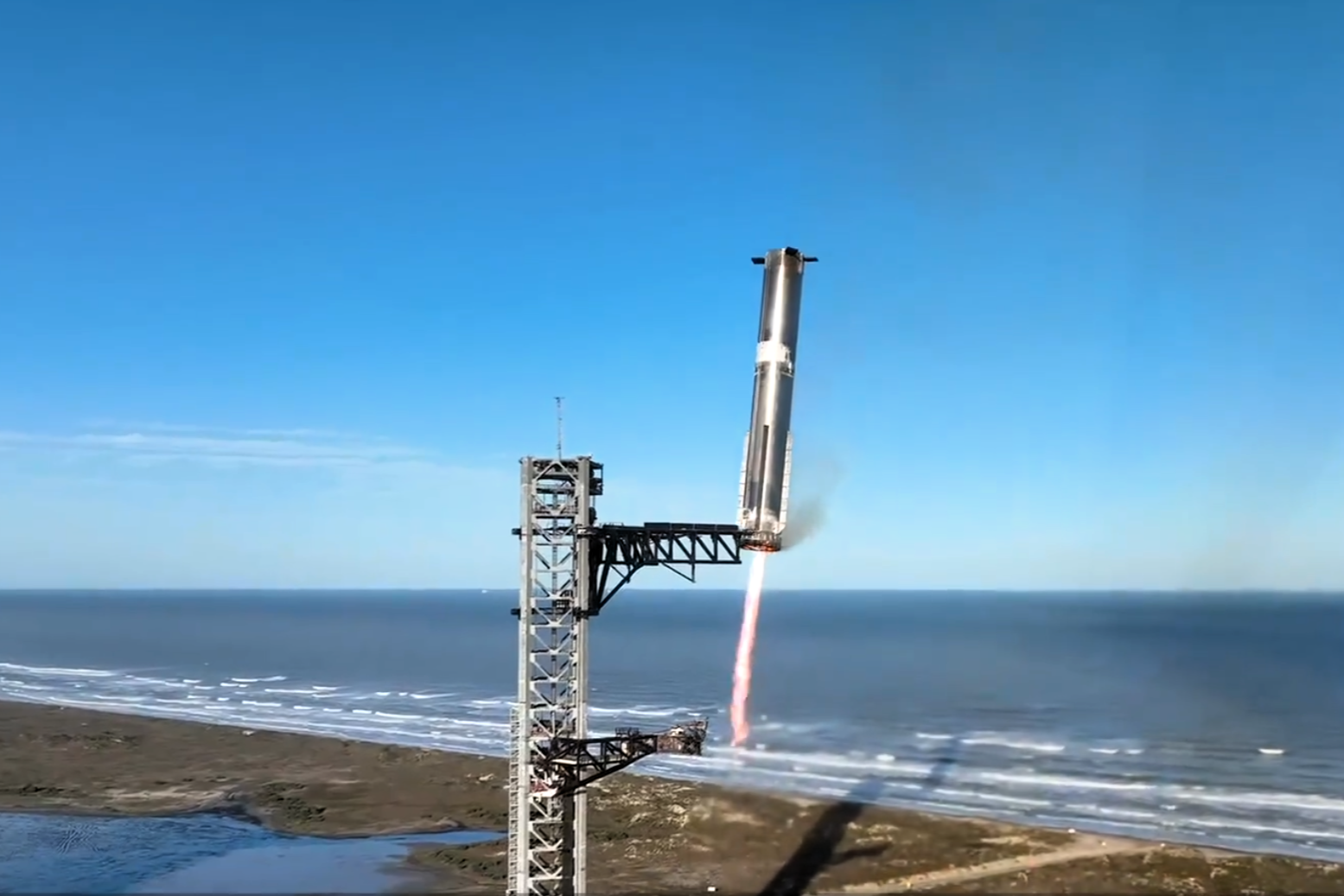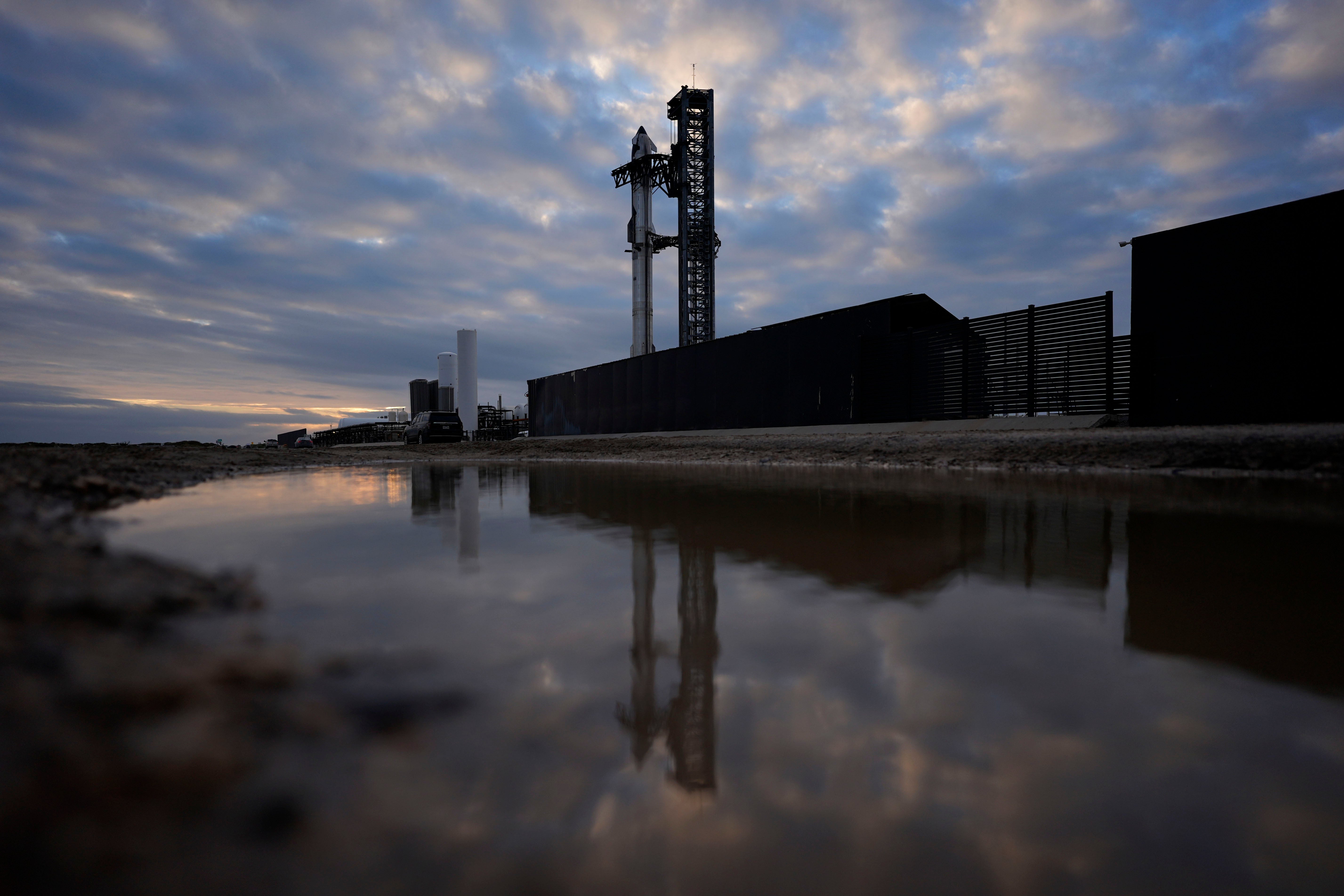SpaceX’s giant Starship rocket blows up in ‘rapid unscheduled disassembly’ during test flight
Thursday’s Starship flight test, which saw the upper stage disappear while approaching orbital velocity, comes just months ahead of the first planned commercial missions
SpaceX’s giant Starship rocket blew up in midflight during a crucial test of Elon Musk’s Mars ambitions after its booster was successfully caught by its “chopsticks” system.
“Starship experienced a rapid unscheduled disassembly during its ascent burn. Teams will continue to review data from today’s flight test to better understand root cause,” the company said on X on Thursday.
“With a test like this, success comes from what we learn, and today’s flight will help us improve Starship’s reliability.”

Starship Flight 7 lifted off from the company’s Starbase facility in Texas at 4.37pm local time (10.37pm GMT) on Thursday, with the first stage booster returning to the launch pad shortly after. The second stage was unable to complete the flight test after its engines began to shut off while approaching orbital velocity.
Measuring two metres taller than its predecessors, the Block 2 Starship is the biggest rocket ever built – more than double the height of the Leaning Tower of Pisa.
Success is uncertain, but entertainment is guaranteed! ✨
— Elon Musk (@elonmusk) January 16, 2025
pic.twitter.com/nn3PiP8XwG
Following the launch of the 123-metre-tall rocket, which Elon Musk hopes to use to colonise Mars, the rocket’s Super Heavy booster returned to the launch tower, where a giant chopstick mechanism caught it in a controlled manoeuvre.
The first-of-its-kind landing system is being designed for rapid reusability, allowing ground crew to refuel the rocket and send it back on its way, much like an aircraft.
SpaceX has only caught the booster rocket once before, with the last attempt in November aborted in the final moments.
Communication was lost with the rocket’s upper stage, which was meant to splash down in the Indian Ocean following a 90-minute flight.

SpaceX said the craft was most likely lost shortly after separation from the Super Heavy booster, with the craft featuring a number of significant upgrades that was “intentionally designed and flown to test the envelope... and test the boundaries of this vehicle”.
Upgrades to the latest Starship rocket include smaller flaps, redesigns to the propulsion system, a 25 per cent increase in propellant volume, and a complete overhaul of the vehicle’s avionics.
It is also the first time that SpaceX has carried a payload into space using a Starship rocket, albeit a fake one. 10 “Starlink simulators”, aimed at mimicking the company’s space internet satellites, were meant to be deployed in space, however appear to have been lost with the rocket’s second stage.
SpaceX hopes to begin the first commercial Starship missions later this year.
Join our commenting forum
Join thought-provoking conversations, follow other Independent readers and see their replies
Comments
Bookmark popover
Removed from bookmarks